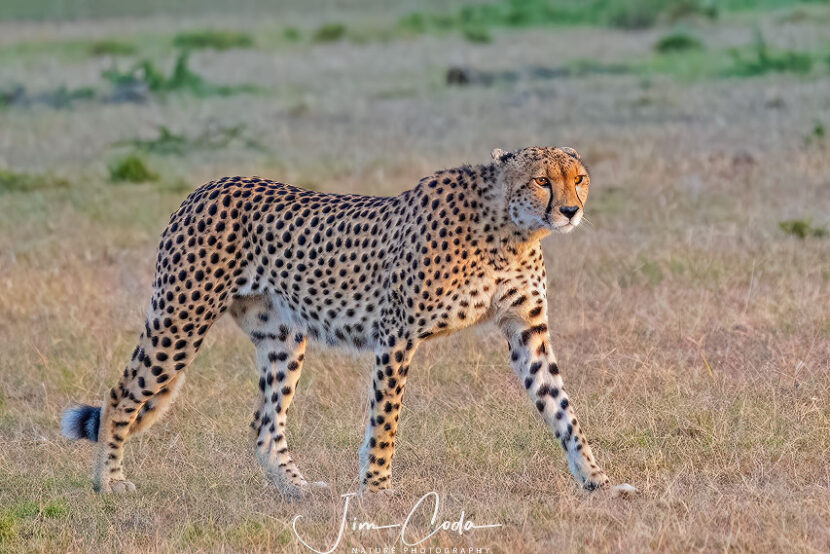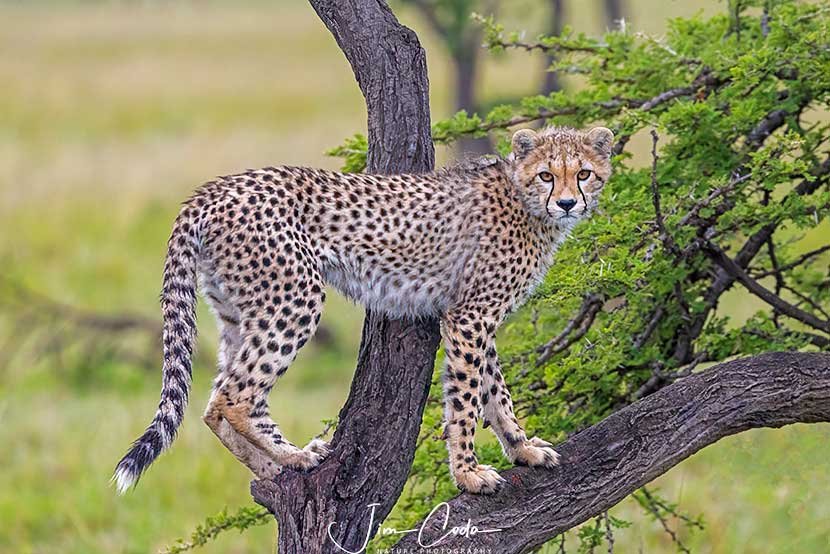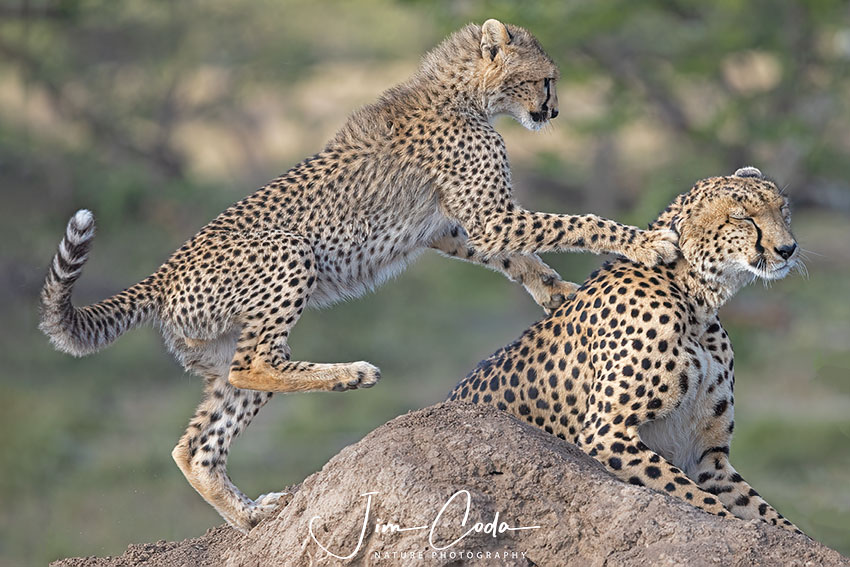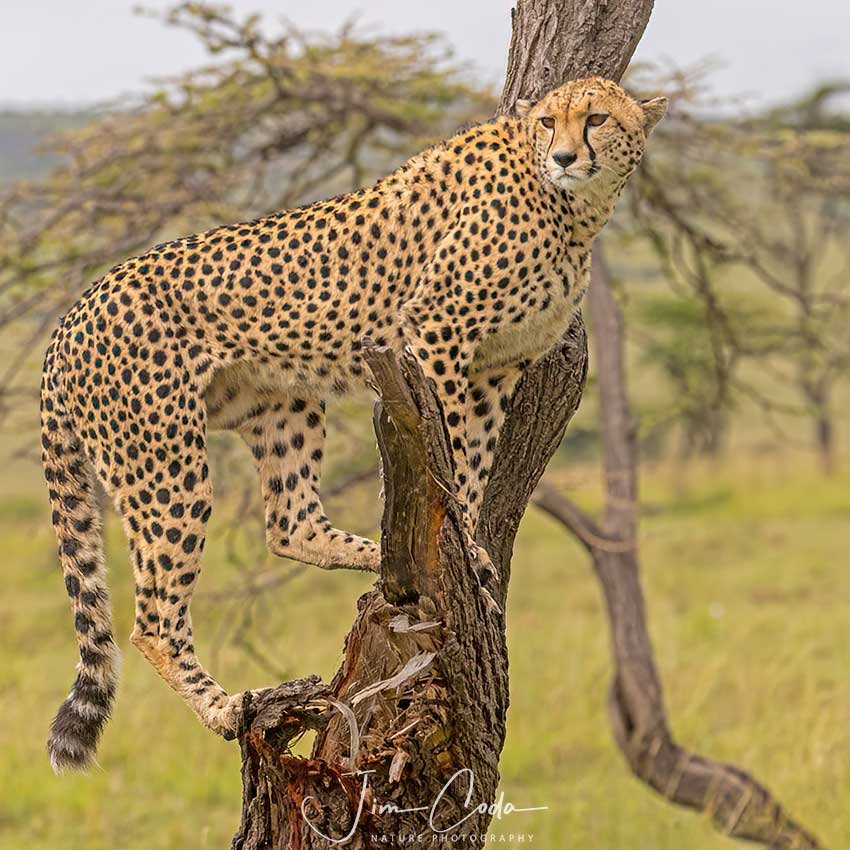Cheetah, Ol Kinyei Conservancy, Kenya

This female cheetah begins a hunt. She was successful in catching a gazelle right after this photo was taken. She has one cub left to care for. The others were killed by lions.
This site is dedicated to wildlife and landscape photography.
This site is dedicated to wildlife and landscape photography.
This site is dedicated to wildlife and landscape photography.

This female cheetah begins a hunt. She was successful in catching a gazelle right after this photo was taken. She has one cub left to care for. The others were killed by lions.

I’ve noticed that in my photos where a cheetah is walking, its ears are often pinned back. I don’t know why that is. Is it because it’s near me? I don’t think so because when I photograph them sitting or lying down their ears aren’t pinned back. FWIW, I googled what that means with our domestic cats and it can mean fear or aggression. I googled cheetah ears and found that cheetah is unique among the cat species in that its large inner ear helps it keep its eyes locked on prey even when sprinting. But they are walking, not running, when I see their ears pinned back. I have one possible theory. Maybe it makes them a little less visible, especially in tall grass. Any ideas?

A cheetah mother starts to hunt in the Olare Motorogi Conservancy. She has three hungry cubs to feed.

I love observing and photographing cheetah cubs at play. This cub was very entertaining.
One of the interesting things about all cheetahs is the tear tracks. I checked to see if there was anything written about why those tear tracks evolved and found that of all the big cats their hunting is almost always limited to daylight hours and the tear tracks help their eyes cope with the glare of the sun. Their tear tracks act like the black grease and tape used by some athletes when they play day games. Evolution is an interesting subject.

I photographed this cheetah cub in Kenya’s Olare Motorogi Conservancy just north of the Maasai Mara Reserve.
I’ve become a big fan of these Kenyan conservancies which I knew nothing about until last spring. The conservancies are lands owned by Masai, which were used exclusively for ranching/farming and are now being allowed to revert back to natural conditions. Safari companies lease these lands from the Masai people at rents equal to or more than what the Masai would make ranching and farming them. Plus, the Masai people are hired to staff virtually 100% of the safari camps and the safari companies provide other benefits, such as assistance in education and health care. The whole objective is to slow the increasing conversion of Africa’s wild lands to agriculture due to expanding populations.
To a wildlife photographer like me, the conservancies offer some important advantages compared to places like the Maasai Mara Reserve and Serengeti National Park in northern Tanzania. First, there are strict limits on how many visitors can be in each conservancy at any time. Second, there is no rule against driving off-road to photograph like there is in the Reserve and in Serengeti. Third, I came to photograph the big cats and I saw and photographed many, many more big cats in the Ol Kinyei and Olare Motorogi Conservancies in 2022 than I did in the Serengeti in 2018.
The conservancies are the only bright spot in the relentless push to ranch/farm more wild lands. If you are thinking of going on a safari in Kenya, please use a safari company that is involved in the movement to create more conservancies. Wild lands are being lost every day. There is a lot of information on the internet about the conservancies, including who the safari companies are that operate camps in them. I used Gamewatchers Safaris.

I photographed this cheetah cub playing with its mom last month while spending four great days at Gamewatchers’ Porini Mara Camp in the Ol Kinyei Conservancy in Kenya. As I recall, my guide, George, told me this cheetah mother started with six cubs but lions got all but this one. I hope it makes it to adulthood.

To finish the story I started a week or so ago, after those great four days with Gamewatchers Safaris in the Ol Kinyei Conservancy just north of the Maasai Mara Reserve, I spent the next four days at Gamewatchers’ Porini Lion Camp in the Olare Motorogi Conservancy. As the name implies, there are a lot of lions in the conservancy where Gamewatchers’ Porini Lion Camp is located. They were easy to find and photograph. I also saw and photographed leopards on two of the four days and saw and photographed cheetahs every day. Like during my previous four days in the Ol Kinyei Conservancy, I had an excellent guide in Nelson Keiwua. With us every day was Nelson’s spotter, John Tompoi. I think I’m pretty good at spotting wildlife, but Nelson and John are in another league.
It was hard deciding on a photo here, but I finally decided on this cheetah mom who had three cubs. I spent a fair amount of time photographing her and, especially, her three rambunctious cubs. I already want to go back.
